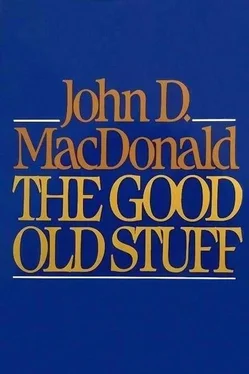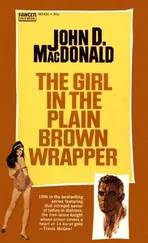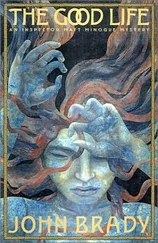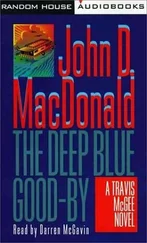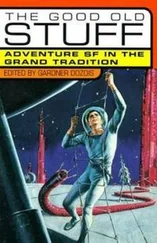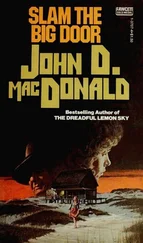John D. MacDonald
The Good Old Stuff
13 Early Stories
To the memory of a lot of good men who wrote well
for the pulp magazines but had less luck than I
Francis M. Nevins, Jr.
For millions of readers John D. MacDonald is the consummate storyteller of our time, a writer who, with his energetic prose, his vivid sense of character, his all but miraculous skill at describing every sort of person and setting and event with economy, elegance, and total credibility, makes us turn and turn his pages with our minds in awe and our hearts hovering around our Adam’s apple. The thirteen stories in this collection demonstrate how fantastically good his best work was at the start of his career.
MacDonald was born in Sharon, Pennsylvania, on July 24, 1916. His father was a strong-willed workaholic who rose Horatio Alger-like from humble origins to become a top executive at a firearms company in Utica, New York. A near-fatal attack of mastoiditis and scarlet fever at age twelve confined young MacDonald to bed for a year, and lack of anything else to do in those days before radio and TV virtually forced him to read or have his mother read to him, huge quantities of books. As soon as he was back on his feet, he began haunting the public library, compulsively devouring every book on the shelves.
After graduating from the Utica Free Academy in 1933, MacDonald took some courses at the University of Pennsylvania’s Wharton School of Finance, then transferred to Syracuse University where, in 1938, he received a B.S. in Business Administration. He married fellow Syracuse graduate Dorothy Prentiss the same year, and was awarded an M.B.A. from Harvard Business School in June 1939. After an assortment of jobs that he hated, he accepted a lieutenant’s commission in the Army in June 1940, and was assigned to procurement work in Rochester, N. Y. until June 1943, when he was sent overseas to Staff Headquarters, New Delhi, India. A year later he was recruited by the Office of Strategic Services, the forerunner of the CIA, and served in Columbo, Ceylon as a branch commander of an Intelligence detachment, rising to the rank of Lieutenant Colonel.
During the idle times, instead of writing his wife letters that he knew would be heavily censored, MacDonald began writing and sending her short stories. One of these, “Interlude in India,” Dorothy sold for $25 to Whit and Hallie Burnett’s prestigious Story Magazine , in whose July-August 1946 issue it appeared. “I can’t describe what it was like,” MacDonald said recently, “when I found out that my words had actually sold... I felt as if I were a fraud... as if I were trying to be something that I wasn’t. Then I thought, my goodness, maybe I could actually be one.”
At the end of the war MacDonald was entitled to four months of stateside terminal leave with pay before his official discharge. He spent the time behind the typewriter, working harder than ever before in his life, putting in 80 hours a week, cranking out 800,000 words worth of short stories, keeping 30 to 35 yarns in the mail at all times — and selling not a word. Finally, early in 1946, a few of the less-than-first-class pulp mystery magazines like Detective Tales and Mammoth Mystery began to buy from him, and by the end of the year he had earned about $6,000, enough to support himself and Dorothy and their seven-year-old son in modest style. For the next half-dozen years most of MacDonald’s income was from magazines, primarily the great pulps like Black Mask, Dime Detective, Doc Savage, The Shadow , and Mystery Book , whose gaudy and lurid covers could still be seen on every newsstand in those immediate postwar years. Once in a while a MacDonald story would sell to a slick periodical like Esquire, Liberty , or Cosmopolitan that paid top dollar, but the vast majority of his tales of the late forties and early fifties went to the pulps, and his name became a fixture on those garish covers several times a month. He made so many pulp sales so quickly that some magazines would run two, three, or even four of his stories in a single issue, one under his own byline, and the rest under “house names.”
MacDonald was the last great American mystery writer who honed his storytelling skills in the action-detective pulps as Hammett and Chandler and Gardner and Woolrich had done before him. During the half-dozen years after the war he produced more than two hundred pulp tales whose variety in length and content is astonishing. There were 2 Westerns, [1] One of these, a bizarre revenge story entitled “The Corpse Rides at Dawn” ( Ten-Story Western , April 1948), was reprinted a few years ago in Damon Knight’s anthology Westerns of the 40s: Classics from the Great Pulps (Bobbs-Merrill, 1977).
at least 21 sports stories, well over 40 ventures into science fiction, [2] A selection of MacDonald’s old and new science-fiction stories is available in his collection Other Times, Other Worlds (Gold Medal, 1978).
but most of MacDonald’s energies during his formative years as a writer were concentrated in the crime-suspense genre, to which he contributed more than 160 stories between 1946 and the early 1950s. [3] The ultimate word in MacDonaldology, giving full publication data on every scrap of his that has appeared in print anywhere, is Walter and Jean Shine’s A Bibliography of the Published Works of John D. MacDonald (Gainesville: Patrons of the University of Florida Libraries, 1980).
Gingerly turning the now brown-edged pages of those old pulps and tracing MacDonald’s apprenticeship as a tale-spinner, we can watch him growing stronger in countless ways in record time. He was writing everything from straight detective stories like “The Simplest Poison” and biter-bit yarns like “Death Writes the Answer” to psychological suspense tales like “Miranda” or thrillers like “Trap for a Tigress.” He was writing about disturbed war veterans, professional criminals and gamblers, city cops, country cops, and all sorts of private adventurers, including one or two recognizable prototypes of that perpetually disappointed boat bum and contemporary knight, Travis McGee. He was experimenting with mini-minis of under two thousand words and short novels the length of a Simenon and everything in between. The best of his stories are masterful and the worst marginal, but in grinding them out at breakneck speed he was evolving the uncanny instincts that shape his sixty-plus novels, from The Brass Cupcake (1950) to Cinnamon Skin (1982).
Several of MacDonald’s earliest pulp crime stories were set in the China-Burma-India locales in which he’d spent the war. But magazine editor Babette Rosmond persuaded him to take off the pith helmet and start writing about the United States, and from then on the majority of his stories dealt with the postwar American scene. Indeed MacDonald portrayed more vividly and knowledgeably than any other crime writer the readjustment of American society in general and American business in particular from a war footing to a consumer-oriented peacetime economy, and the redemption and return to the real world of all sorts of warhaunted people on the verge of self-ruination by drink and detachment. Several stories of this sort, such as “They Let Me Live” and “She Cannot Die,” are collected here, and even though MacDonald has eliminated or updated some of the topical references that he feels would be lost on today’s reader, perhaps enough remains of the ambience of the late forties and early fifties to demonstrate how the best crime fiction of any period bears witness to later generations about the way we lived then.
Читать дальше
